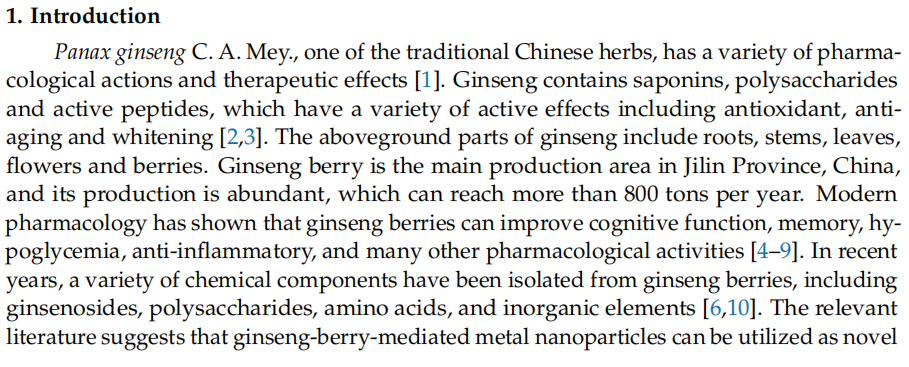
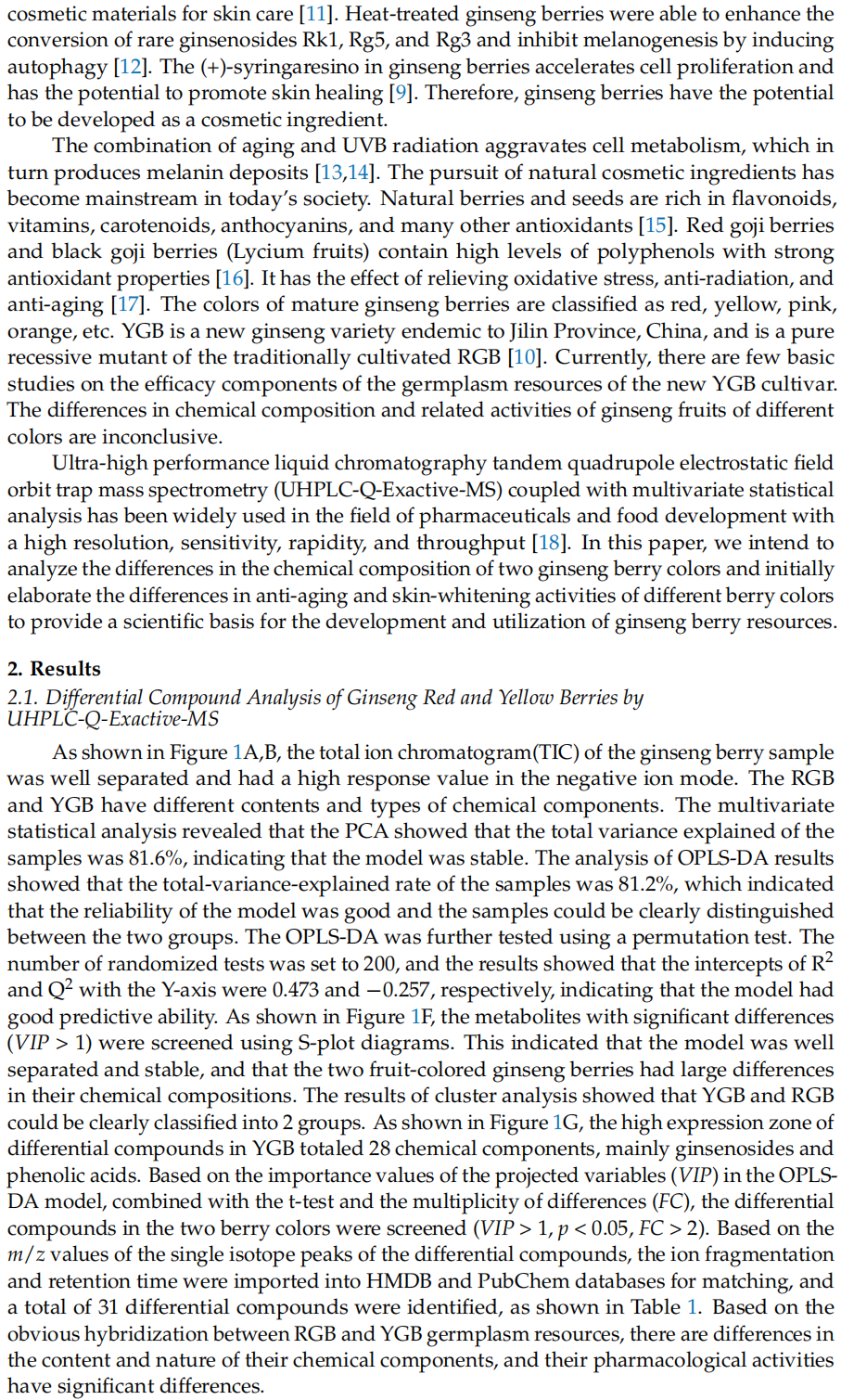
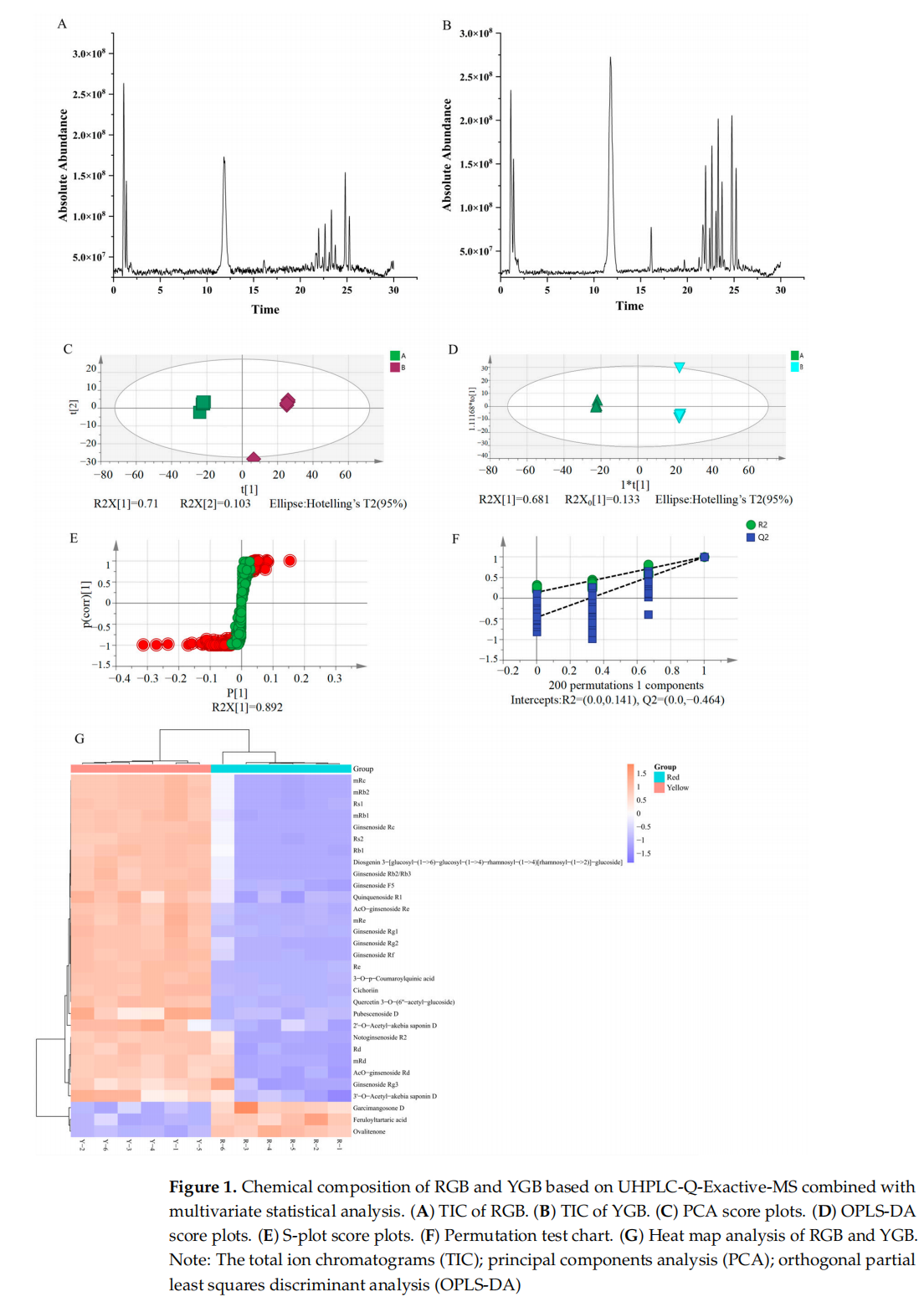
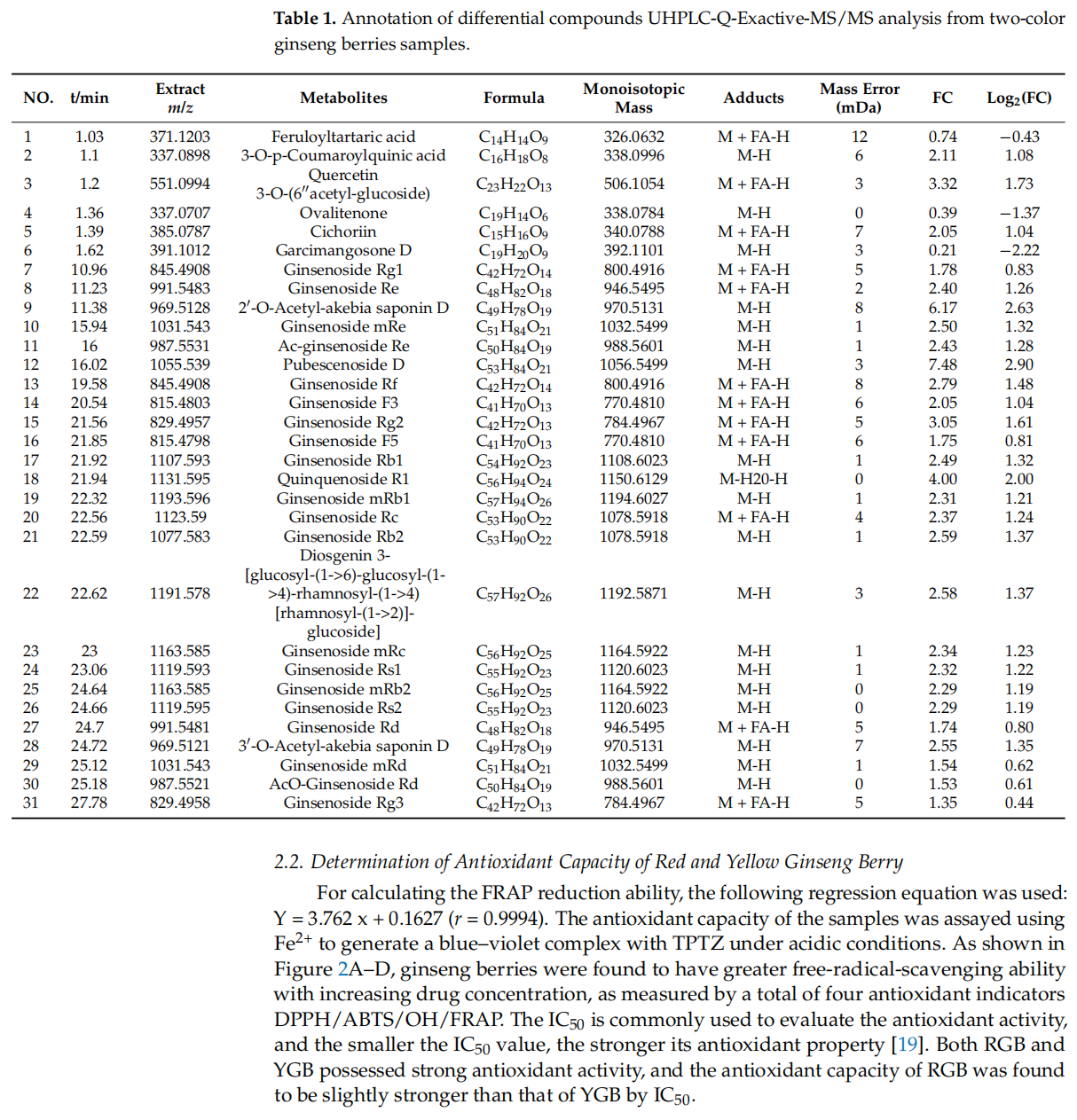
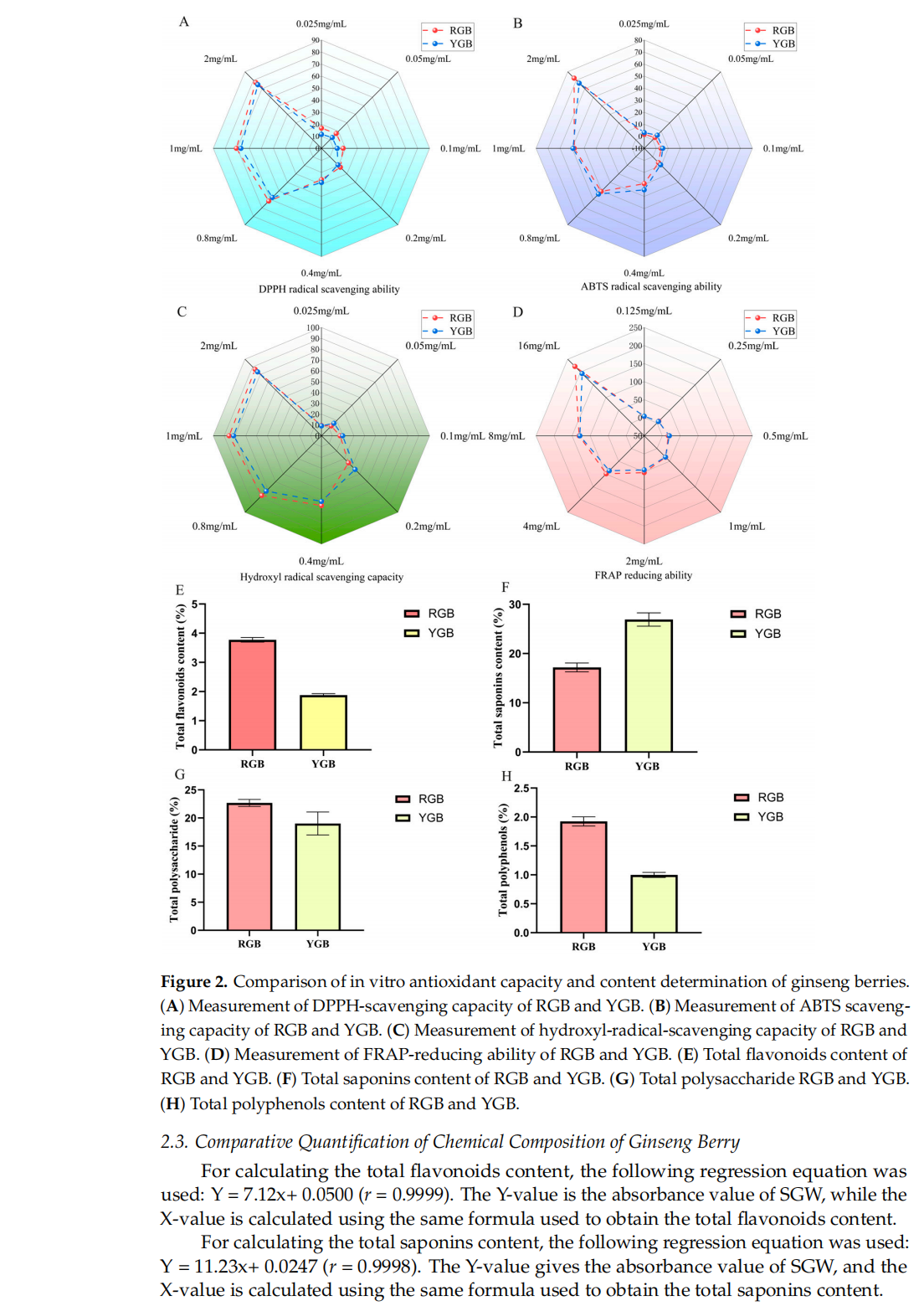
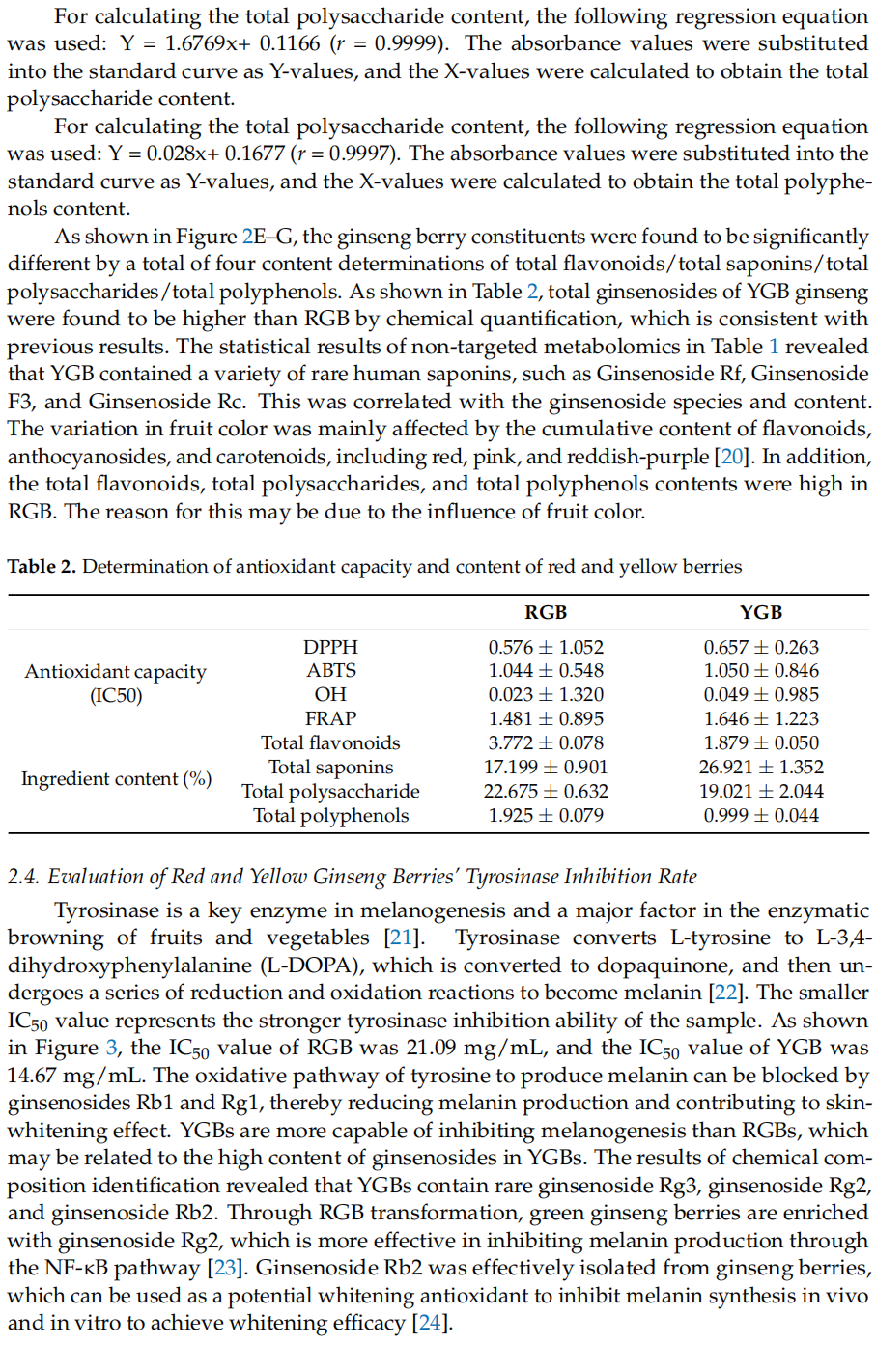
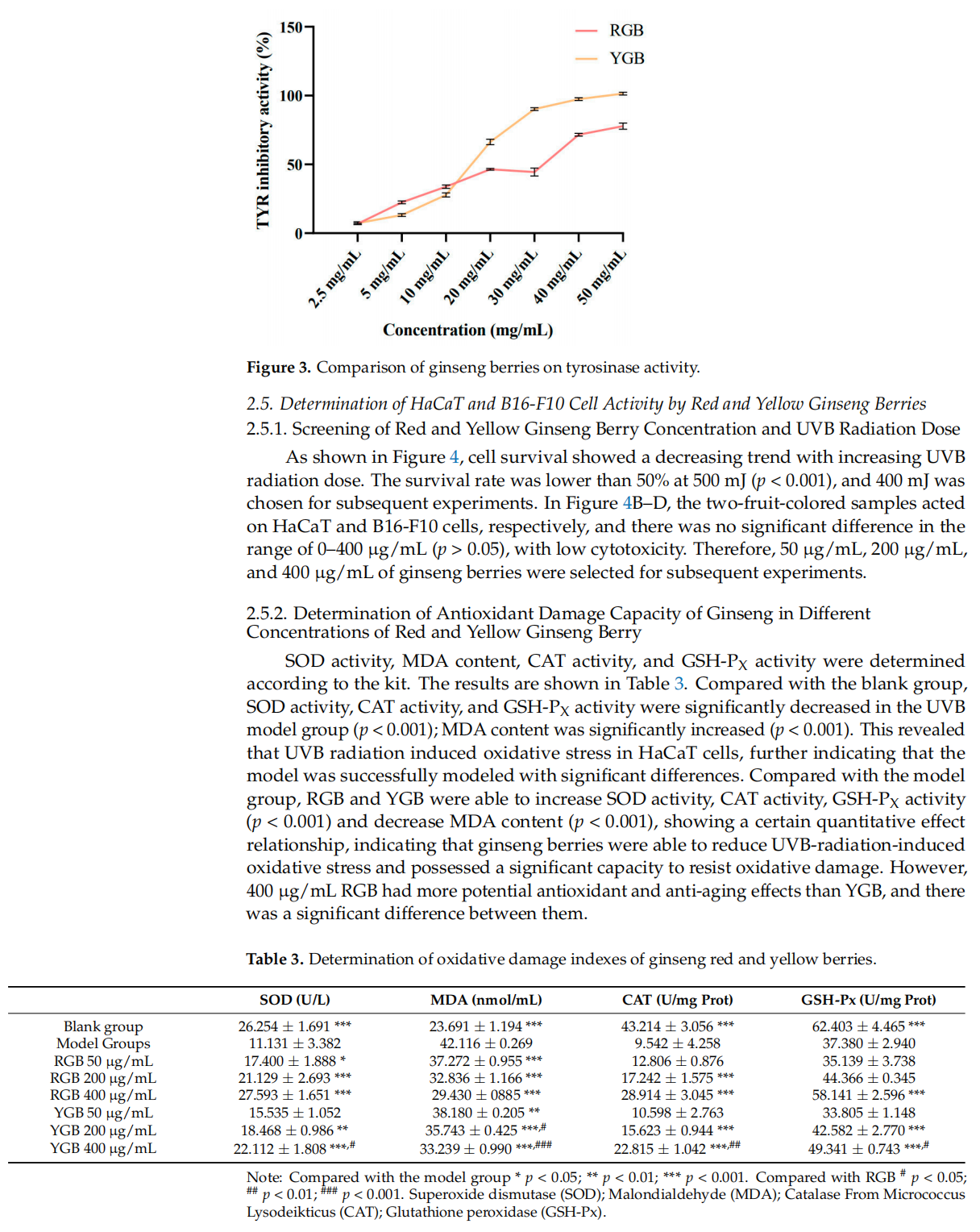
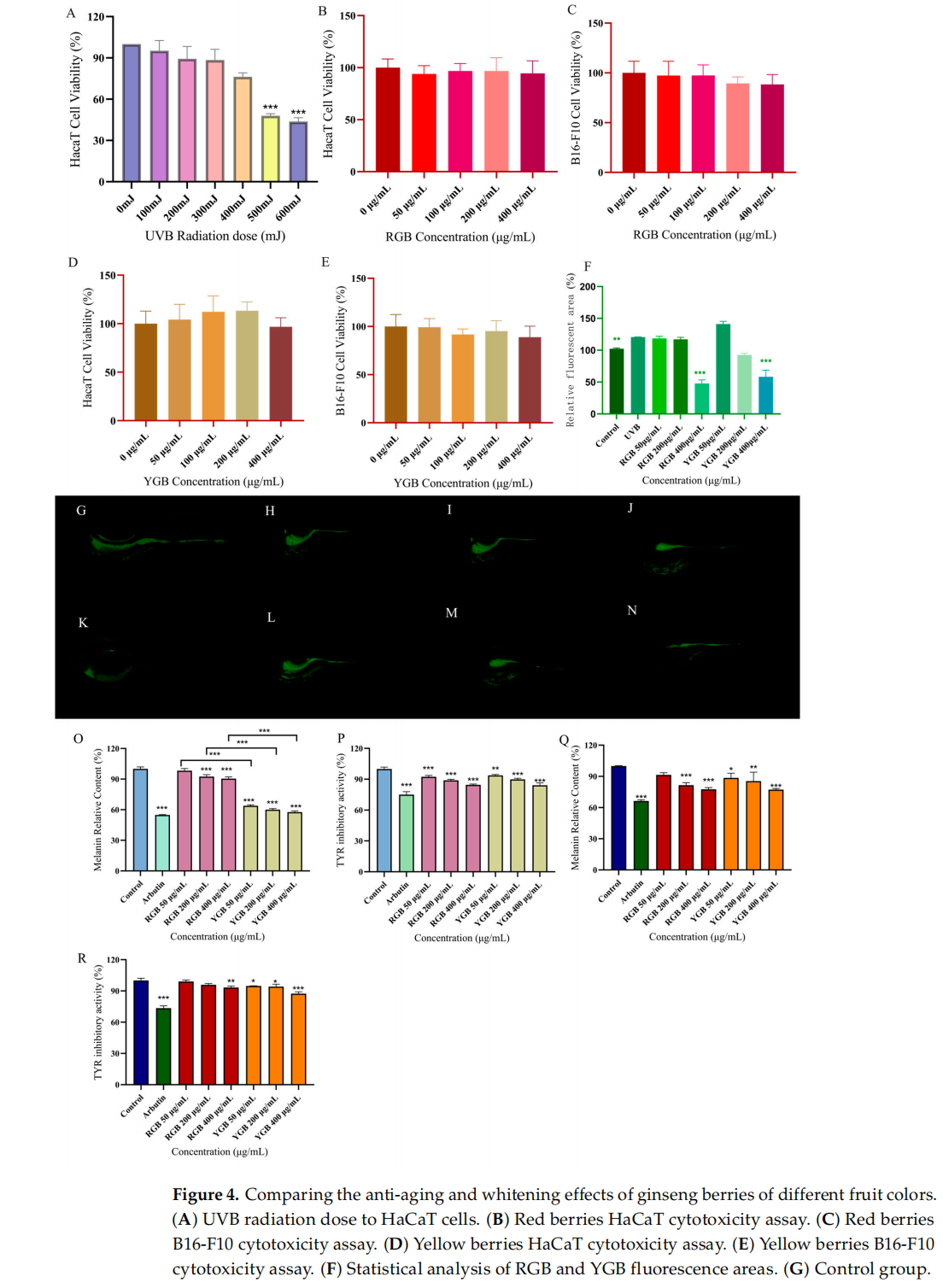
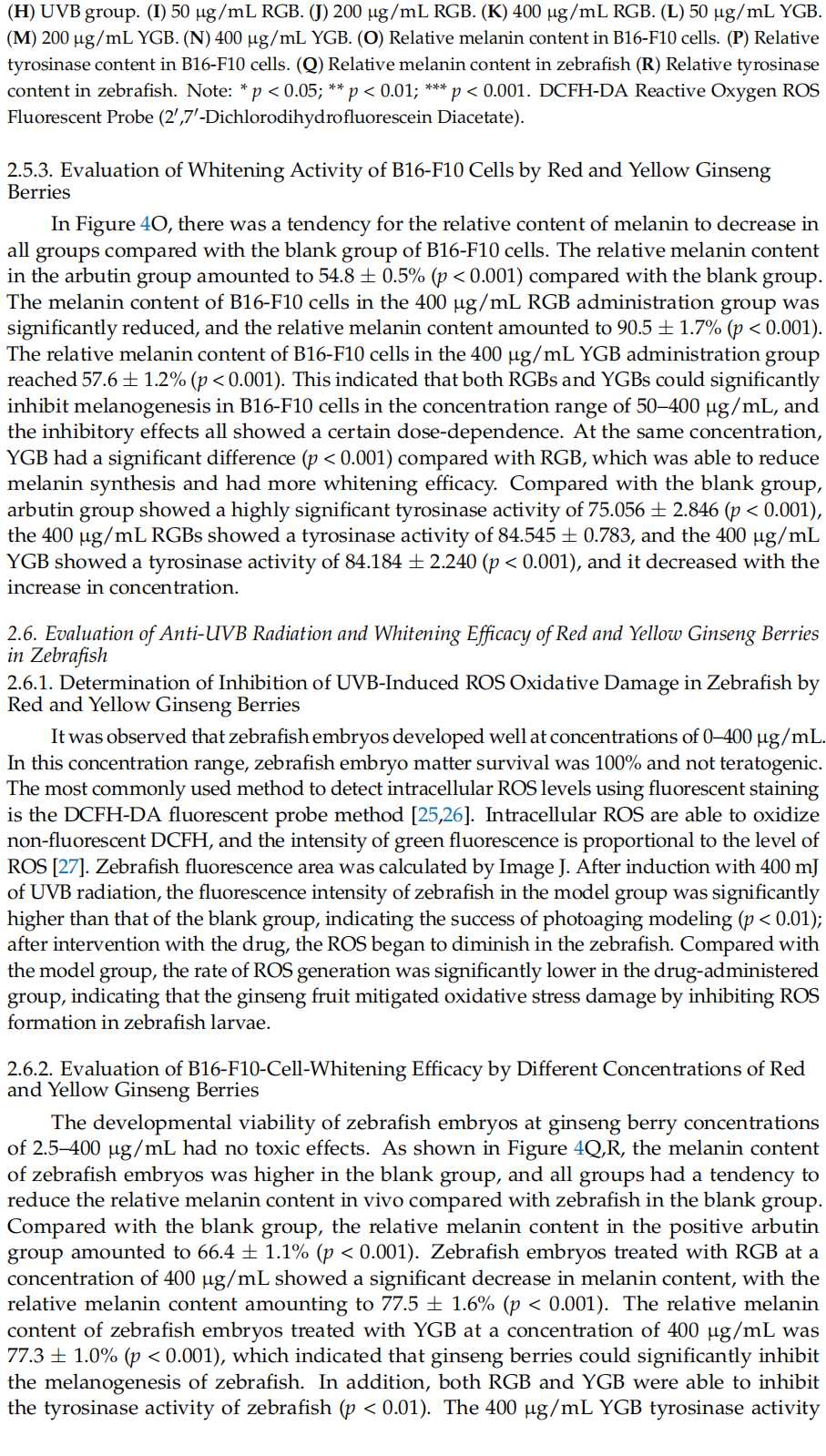
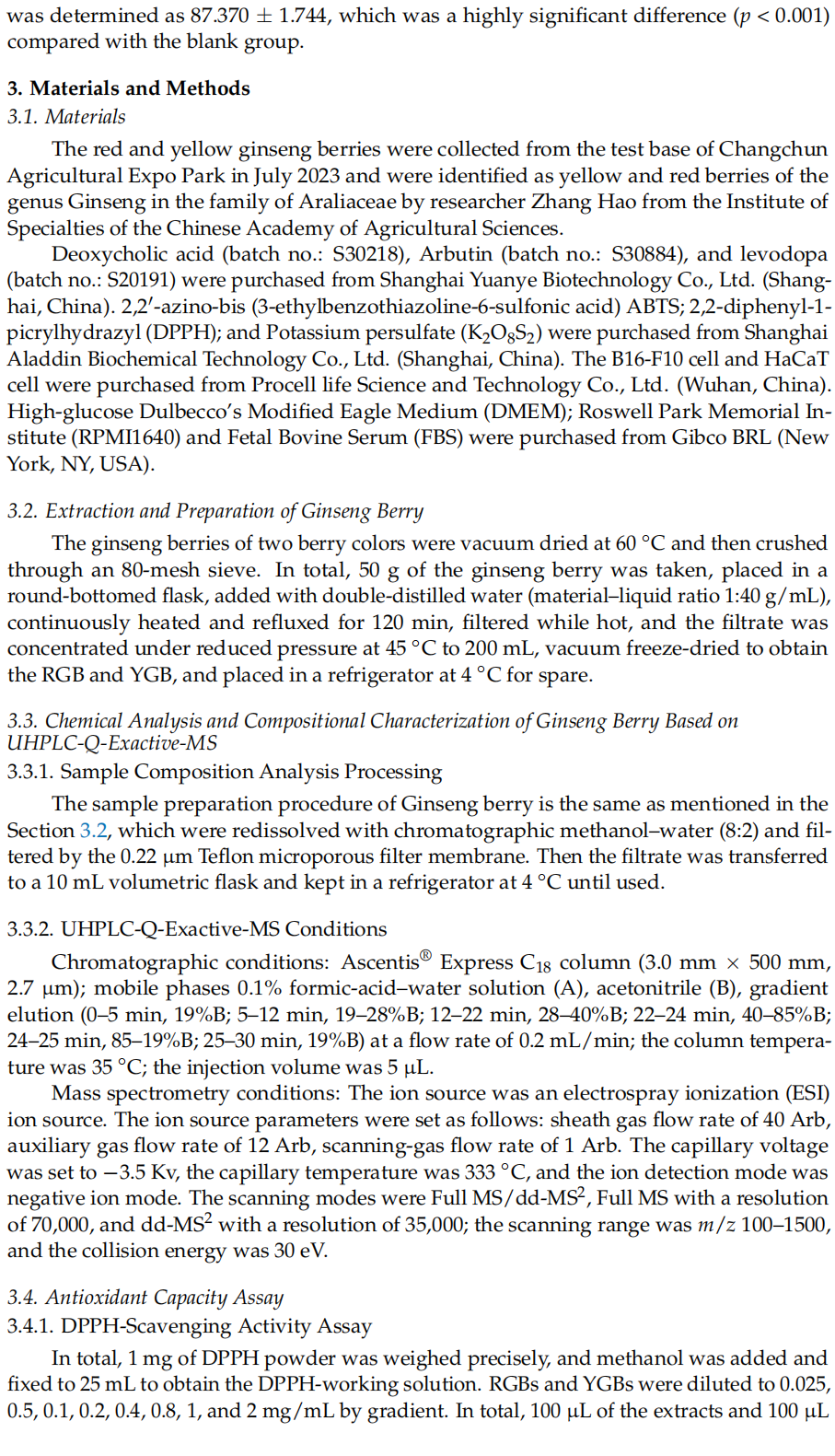
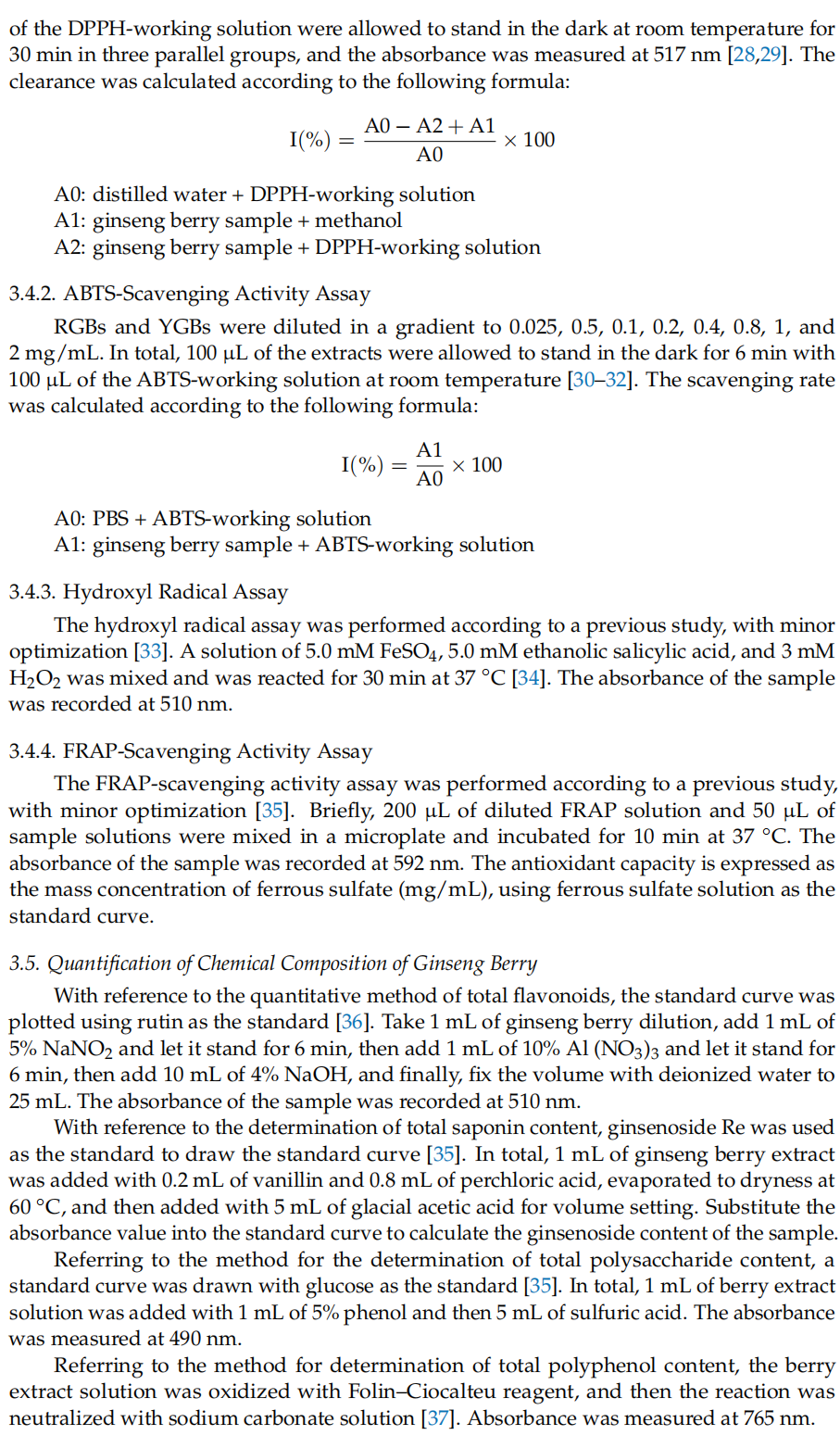
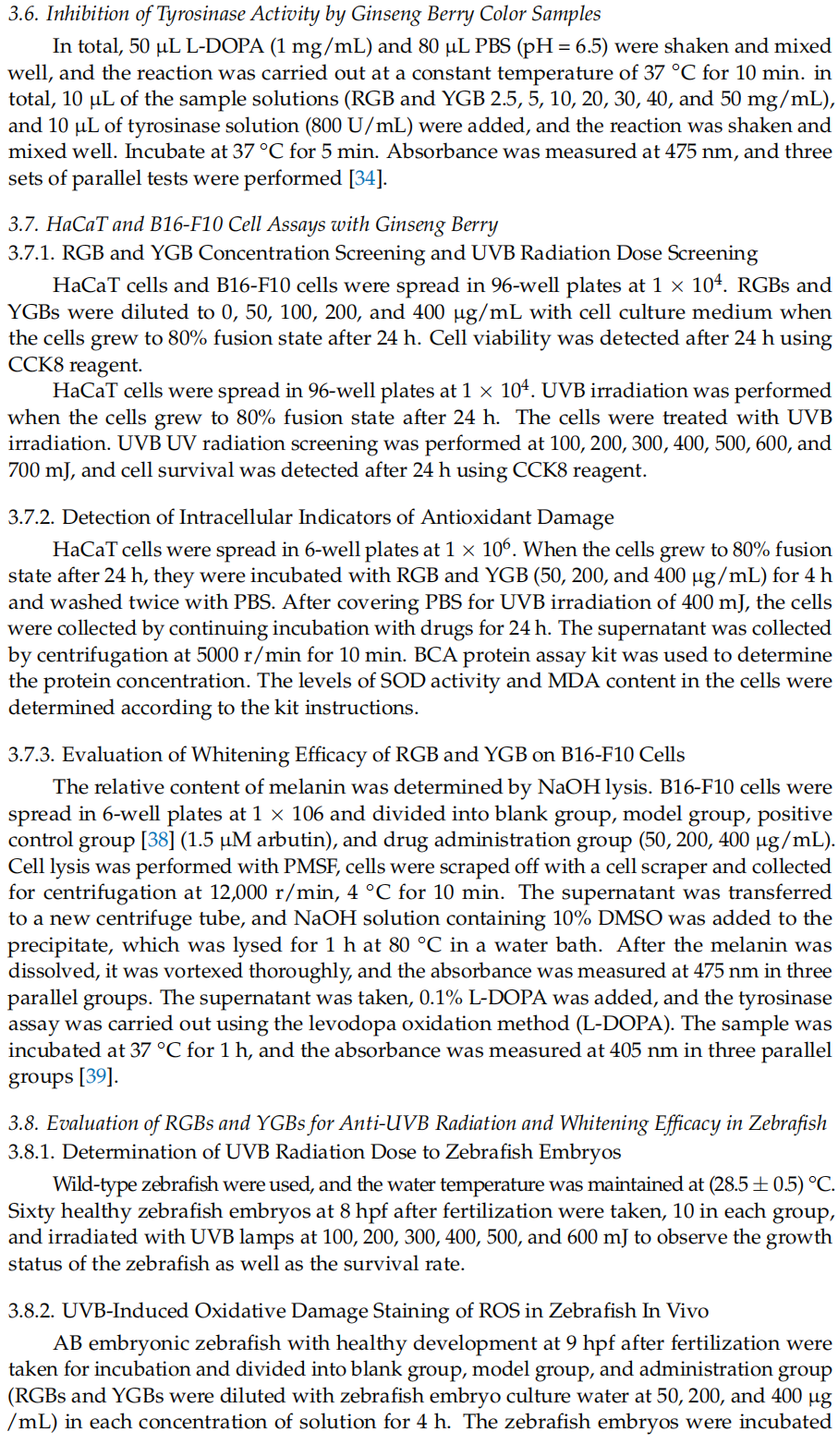

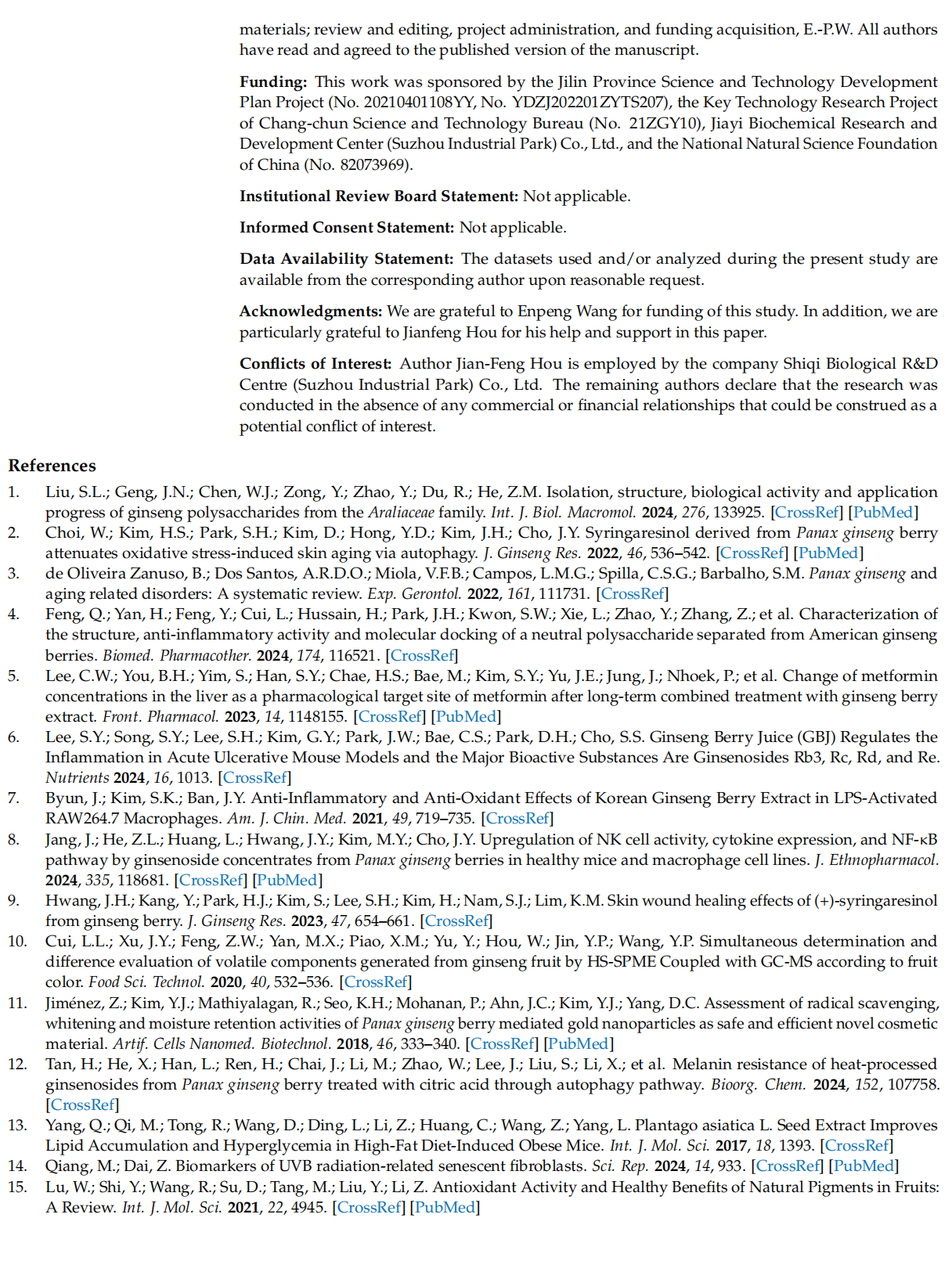
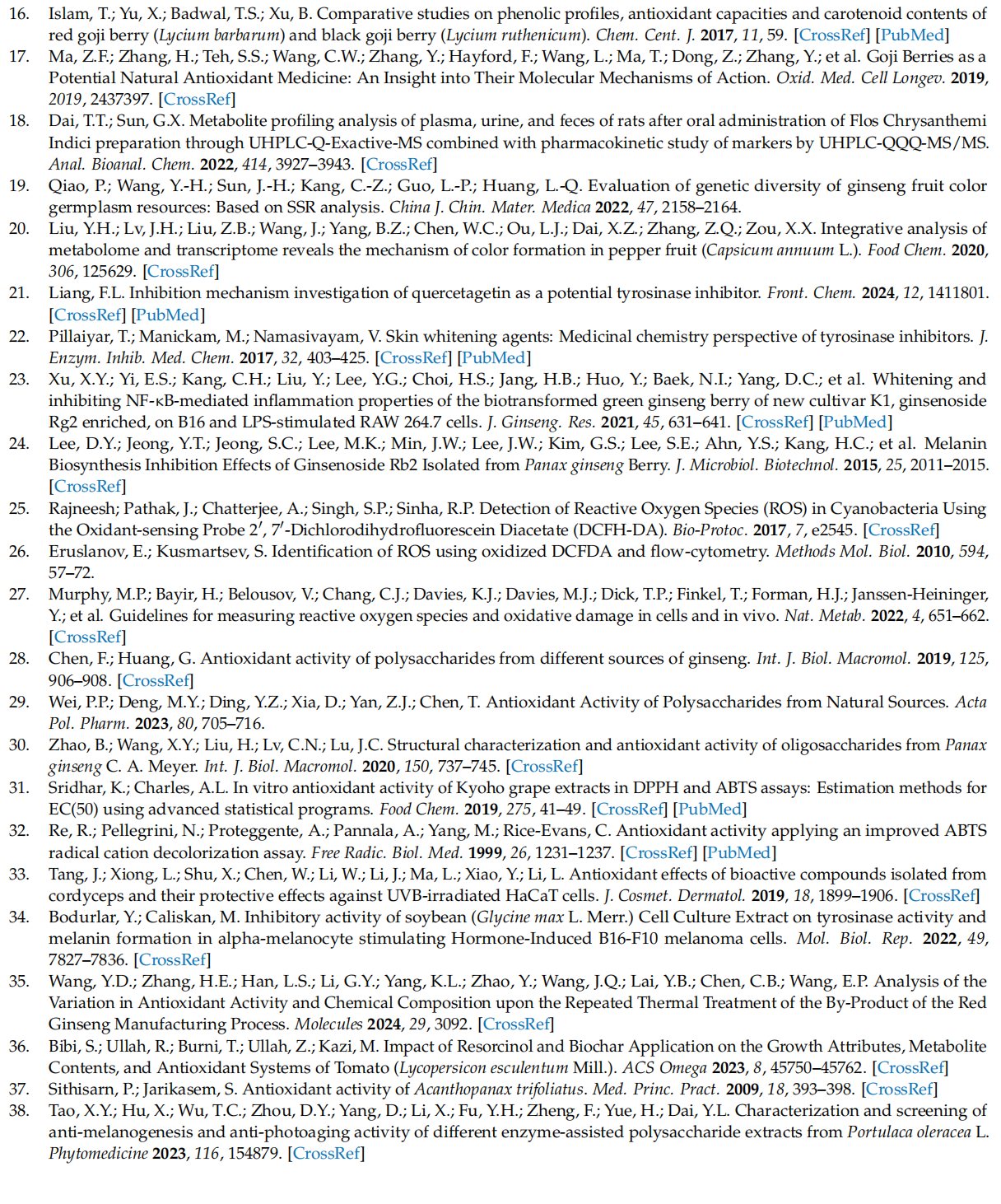

This article is excerpted from the Molecules 2024, 29, 4962 by Wound World.
Yu-Dan Wang 1 , Lu-Sheng Han 1 , Gen-Yue Li 1 , Kai-Li Yang 1 , Yan-Long Shen 2 , Hao Zhang 3 , Jian-Feng Hou 4 and En-Peng Wang 1,*
1 Jilin Ginseng Academy, Changchun University of Chinese Medicine, Changchun 130117, China; 该Email地址已收到反垃圾邮件插件保护。要显示它您需要在浏览器中启用JavaScript。 (Y.-D.W.); 该Email地址已收到反垃圾邮件插件保护。要显示它您需要在浏览器中启用JavaScript。 (L.-S.H.); 该Email地址已收到反垃圾邮件插件保护。要显示它您需要在浏览器中启用JavaScript。 (G.-Y.L.); 该Email地址已收到反垃圾邮件插件保护。要显示它您需要在浏览器中启用JavaScript。 (K.-L.Y.)
2 College of Innovation and Entrepreneurship, Changchun University of Chinese Medicine, Changchun 130117, China; 该Email地址已收到反垃圾邮件插件保护。要显示它您需要在浏览器中启用JavaScript。
3 Institute of Special Animal and Plant Sciences CAAS, Changchun 130112, China; 该Email地址已收到反垃圾邮件插件保护。要显示它您需要在浏览器中启用JavaScript。
4 Shiqi Biological R&D Centre (Suzhou Industrial Park) Co., Ltd., Suzhou 215125, China; 该Email地址已收到反垃圾邮件插件保护。要显示它您需要在浏览器中启用JavaScript。 * Correspondence: 该Email地址已收到反垃圾邮件插件保护。要显示它您需要在浏览器中启用JavaScript。
Citation: Wang, Y.-D.; Han, L.-S.; Li, G.-Y.; Yang, K.-L.; Shen, Y.-L.; Zhang, H.; Hou, J.-F.; Wang, E.-P. A Comparative Study of the Chemical Composition and Skincare Activities of Red and Yellow Ginseng Berries. Molecules 2024, 29, 4962. https:// doi.org/ 10.3390/molecules29204962
Academic Editors: Jurca Tünde and
Laura Gratiela Vicas
Received: 5 September 2024
Revised: 14 October 2024
Accepted: 18 October 2024
Published: 20 October 2024
Copyright: © 2024 by the authors.
Licensee MDPI, Basel, Switzerland.
This article is an open access article distributed under the terms and conditions of the Creative Commons Attribution (CC BY) license (https:// creativecommons.org/licenses/by/ 4.0/)
Abstract: This study was conducted to investigate the differences in chemical composition between red (RGBs) and yellow ginseng berries (YGBs) and their whitening and anti-aging skincare effects. The differences in the chemical composition between RGB and YGB were analyzed by ultrahigh-performance liquid chromatography tandem quadrupole electrostatic field orbit trap mass spectrometry (UHPLC-Q-Exactive-MS/MS) combined with multivariate statistics. An aging model was established using UVB radiation induction, and the whitening and anti-aging effects of the two ginseng berries were verified in vitro and in vivo using cell biology (HaCaT and B16-F10 cells) and zebrafish model organisms. A total of 31 differential compounds, including saponins, flavonoids, phenolic acids, and other chemical constituents, were identified between the two groups. Superoxide dismutase (SOD) activity was more significantly increased (p < 0.05) and malondialdehyde (MDA) content was more significantly decreased (p < 0.01) in RGB more than YGB induced by UVB ultraviolet radiation. In terms of whitening effects, YGB was more effective in inhibiting the melanin content of B16-F10 cells (p < 0.01). The results of zebrafish experiments were consistent with those of in vitro experiments and cell biology experiments. The DCFH fluorescence staining results revealed that both ginseng berries were able to significantly reduce the level of reactive oxygen species (ROS) in zebrafish (p < 0.01). Comparison of chemical composition and skin care activities based on RGB and YGB can provide a theoretical basis for the deep development and utilization of ginseng berry resources.
Keywords: ginseng; ginseng berry; chemical composition; anti-aging; anti-UVB; anti-melanin; whitening
















This article is excerpted from the Molecules 2024, 29, 4962 by Wound World.
